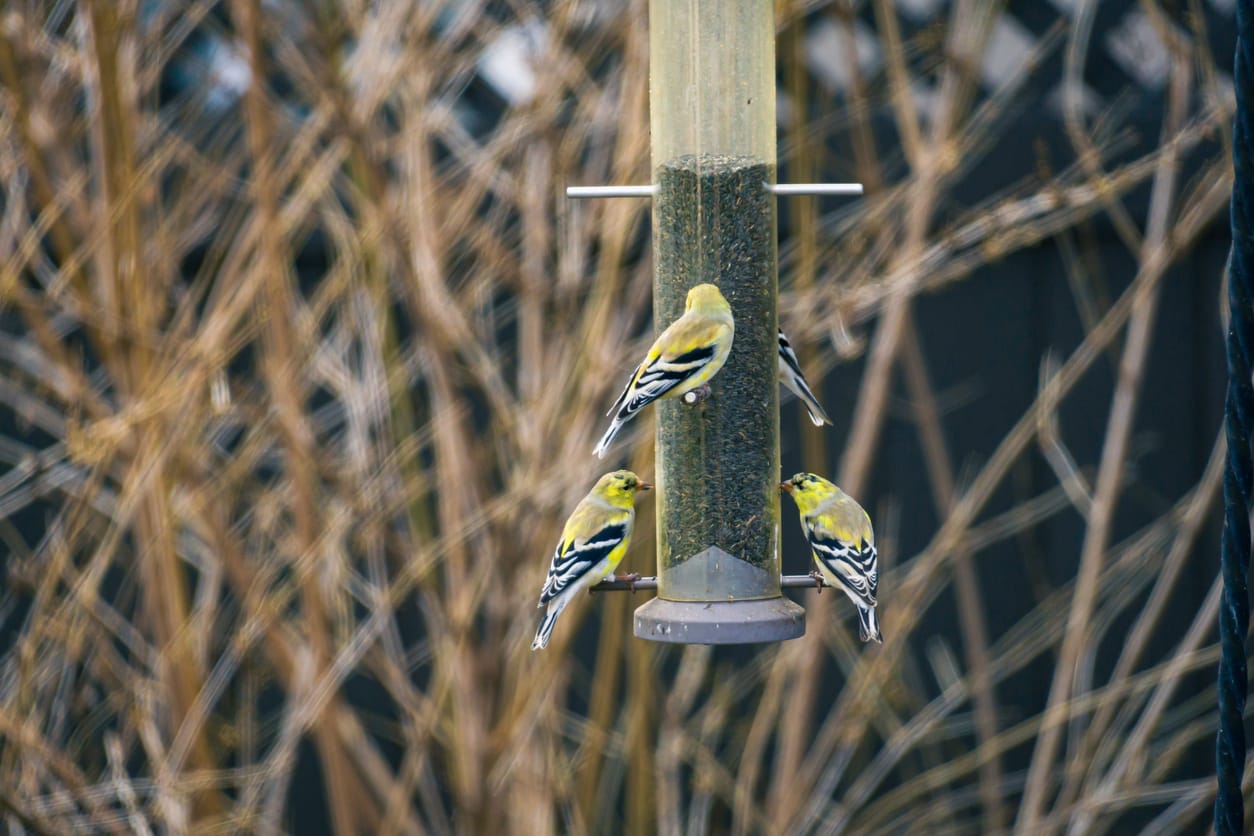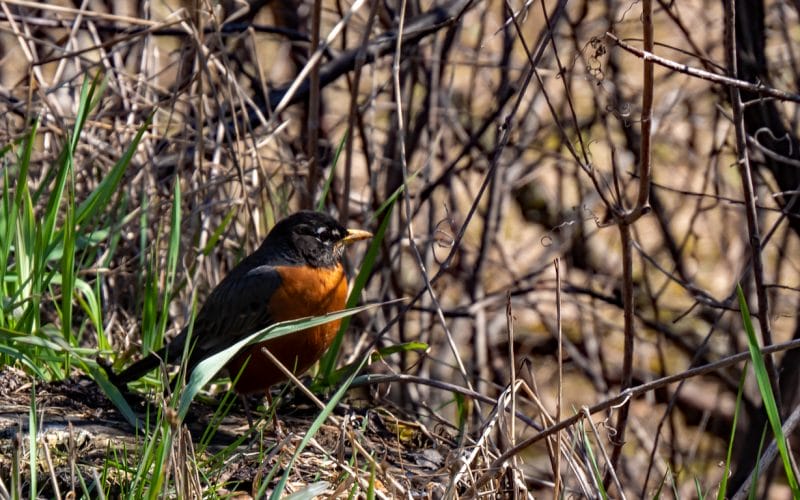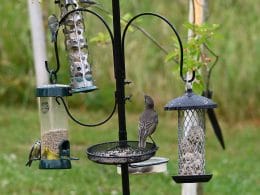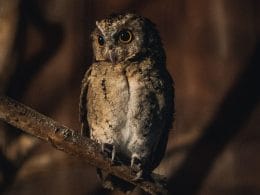Finches are small passerine birds that are a treat to the eyes and the ears. However, you can’t have these birds in a cage at home; they require spacious living areas.
Fortunately, there’s a way to have them flying around in your backyard. Simply, all you have to do is feed them. So, when to put out finch feeders?
The answer to this question depends on several factors like where you are, what type of finches you’re trying to attract, and when finches are expected at your location. Though, some people keep their finch feeders out all year long to keep these colorful beauties in their backyards all the time.
Read on for more information on when to put out finch feeders, what seeds to add, and what finches to attract each time of the year.
When to Put Out Finch Feeders?
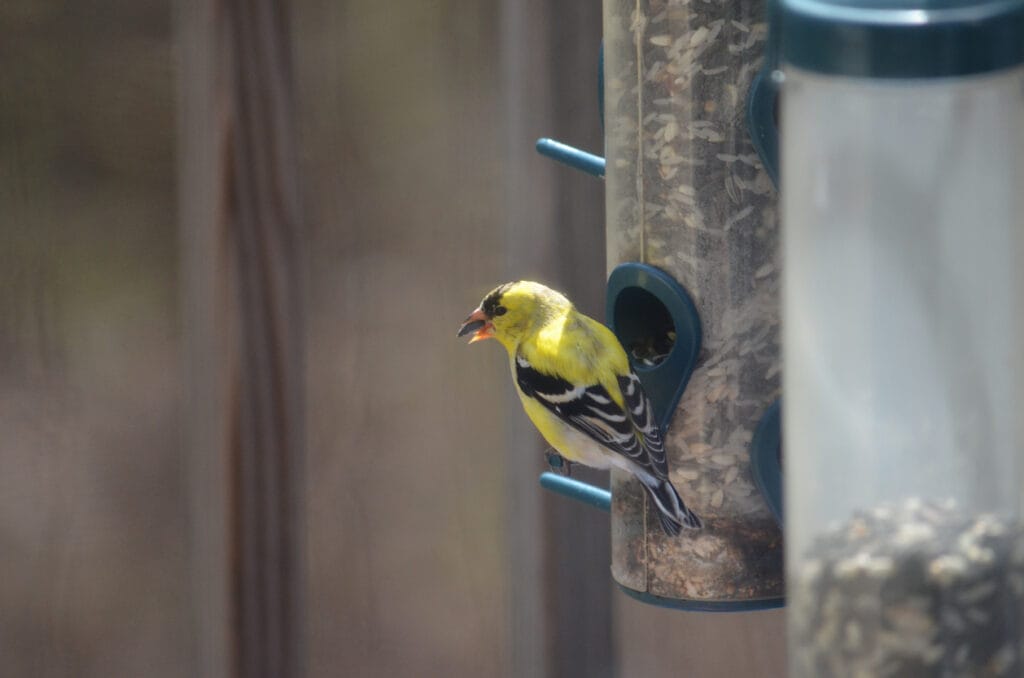
Many bird fanatics use finch feeders to attract colorful finches to their backyards. When you should start putting out your finch feeders depends heavily on your location.
Some species of finches migrate in the winter, whereas others are only expected in specific regions.
Generally speaking, spring is a great time to start putting out your finch feeders. As the weather gets warmer, plants begin to thrive and finches hover around longer.
During spring, you can see many finches flying around, so it’s a good time to try and attract such beauty to your space.
When to Put Out Finch Feeders to Attract Winter Finches?
Although spring is a good time, in general, different species appear during different times.
Winter finches, such as Brown-capped Rosy finches and Black Rosy finches, usually stay close to the ground and come up only for feeding during really cold weather.
That said, to attract these finches, you can put out the finch feeder in early spring.
When to Put Out Finch Feeders to Attract Breeding Male Finches?
Late spring is the nesting season for finches. During this time, they become idle with little ones to feed.
Putting your finch feeder in late spring helps you attract breeding males as well as the last group of finches before migration.
Can I Put My Finch Feeders Out All Year Long?

Different species of finches tend to stay around all year long, so yes, you can put your feeders out all year long.
If you put your finch feeders out during spring, you attract migratory finches and male breeders. Summer and winter are different from spring, though.
With the increased heat of summer, plants grow and attract finches away from your feeders. Therefore, you would find finches foraging around more than spending time in your backyard.
On the other hand, food sources are scarce in the winter. In addition to seeds and vegetation, finches usually feed on insects, which are scarce in cold weather. So, it’s a good idea to keep your finch feeders during winter to leave a constant food supply for your colorful friends.
When to Put Out Finch Feeders According to Your Location?
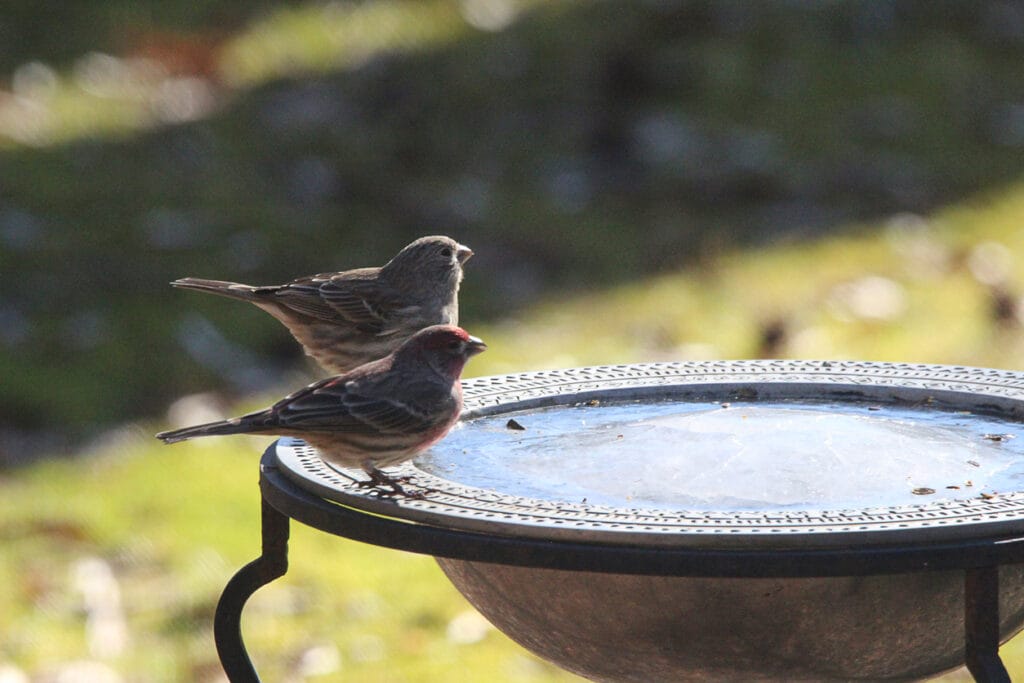
Your location is an important factor to determine the best timing for your finch feeders. Every location has its species, and each species has different feeding and migratory habits.
When to Put Out Finch Feeders If You Live in the South of the US?
If you live in the south of the US, migrating finches will reach your location by mid-late winter on their way to the north. This is when you should put out your feeders.
By the time these birds reach your area, they’re in need of some fresh food source to give them the power they need to finish their journey.
When to Put Out Finch Feeders If You Live in the North of the US?
If you’re on the north side of the US or Canada, the finches in your region don’t migrate. They stay around all year. The best time to put out your finch feeder, in this case, is in late winter or early spring.
Author Note: By the end of winter, finches finish their nesting season and would need extra food for their young. If you put out your feeders by the end of winter, you’re giving them a constant source of food to help them this time of year.
How to Attract Particular Finch Species?
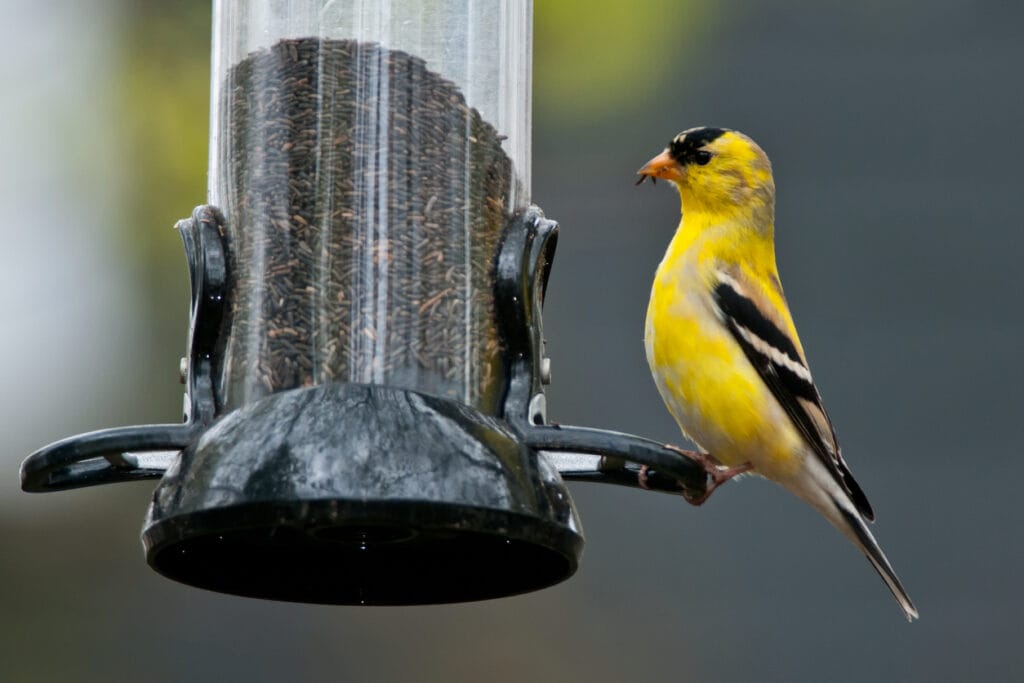
There are about 17 species of finches in North America. Some migrate thousands of miles while others remain home all year round.
To attract a particular species of finches, you should find out more about its migration patterns. You need to know when exactly to expect this type of finch in your area.
Where to Put Out Finch Feeders?
The location of finch feeders also has an impact on the finches’ feeding habits. The most important rule is to keep your finch feeder out of reach. Finch feeders should not be seen from the ground or out of a window.
The best thing to do is to hang your finch feeder on a tree or pole. This way, you’re putting your feeder out of the reach of most predators yet low enough to spot birds with your binoculars.
Remember, no matter what height you choose for your finch feeder, make sure you can easily reach it to refill it later.
Moreover, you need to keep your finch feeders away from windows. Probably, a number of feet away from the nearest window makes it safer for the bird.
How to Put Out Finch Feeders?
Putting out a finch feeder is not a difficult job. Follow these steps to ensure the safety of your beloved finches:
- Find the best spot for your feeder, like a high tree.
- Attach the finch feeder securely to a branch.
- Make sure there’s space around the feeder to allow it to move with the wind but still remain close to the tree trunk.
- If squirrels are common in your area, use a squirrel baffle to keep them away.
- Fill your feeder with seeds and enjoy the sight of pretty finches.
Tips for Attracting Finches to Your Backyard

Sometimes, you do all the right things but still don’t see any colorful visitors in your backyard. There’s no need to worry; just be patient and follow these tips to attract finches to your space:
1. Put Finch Feeders in Safe Locations
Placing your feeders next to shrubs or trees makes the birds feel safer, thus encouraging them to hang around your backyard.
Once finches know your feeder, you may move it somewhere else to protect it against squirrels.
2. Use the Right Seed
Finches feed on black seeds. They won’t eat brown or old-looking seeds. Therefore, make sure you fill your feeder with black-colored seeds. For this matter, thistle seeds, also known as Nyjer, are the ideal choice.
In addition, finches also eat black oil sunflower seeds. With their high fat content, the black oil sunflower seeds can be a great source of nutrients.
3. Keep It Fresh
Finches only consume fresh seeds. They’d typically ignore half the content of your feeder. In this case, check for the seeds’ freshness.
To check the freshness of the seeds, all you need to do is pinch one with your fingernail. If oil comes out, it’s fresh.
Top Tip: Make sure you store Nyjer correctly as it can dry out very fast. You can either store the fresh seeds in the freezer or buy only what you need to fill the feeder.
4. Keep the Finch Feeder Clean
Finches will avoid your feeder if you don’t clean it regularly. Rain can cause seeds to become clumpy, which makes them hard for finches to pull out.
Consider adding a weather guard to protect your feeder against rainfall.
5. Remove Other Bird Feeders Temporarily
It can take finches several days or weeks to get used to a new feeder. You can help them by removing other bird feeders around. This makes finches look for new food sources and use yours more readily.
6. Add Colors and Vegetation to Your Backyard
Colors attract birds. It’s a good idea to plant colorful flowering plant species in your backyard. They make birds feel welcomed. Some finches even feed on the seeds and flower heads of these plants.
7. Give Finches False Company
Most finches would take time before approaching a new feeder to make sure it’s safe. That said, it’d be helpful if you give them the impression that there are other birds around your feeder.
Top Tip: You can do this by adding colorful ribbons in the area around your finch feeder. When these ribbons move with the wind, the finches will mistake them for birds. This means other birds find the area safe enough to feed, which encourages them.
Strangely enough, if you hang your new feeder half-full, finches get the impression that other birds have found it safe enough, and will use it.
In Short
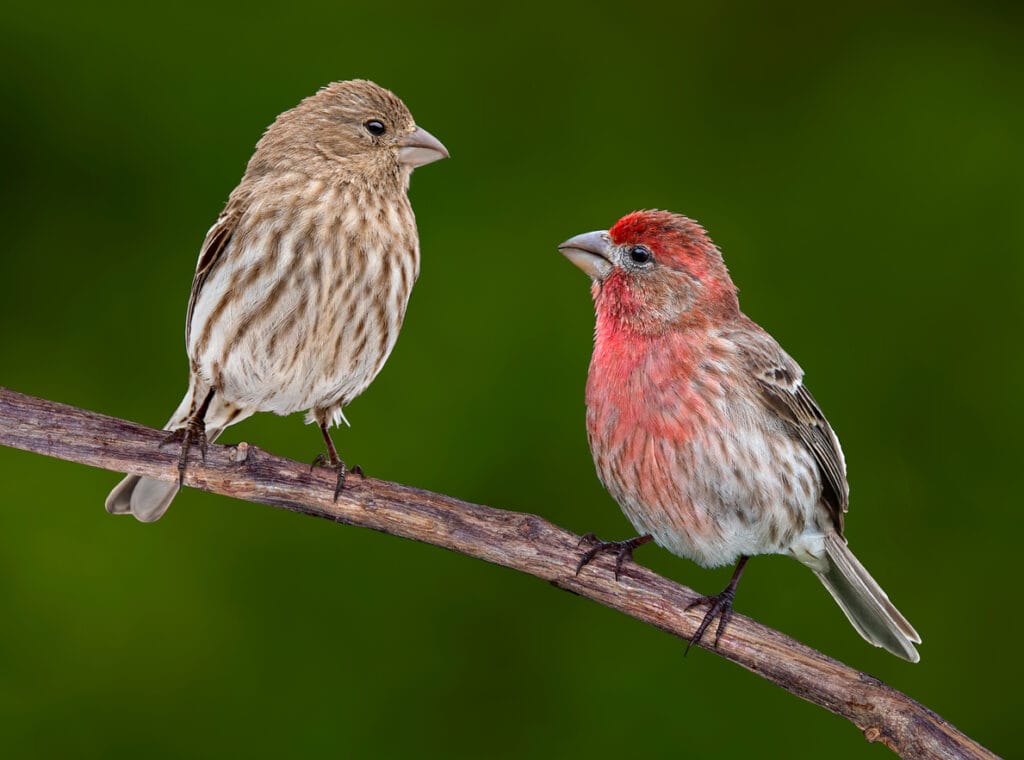
If you enjoy the sight of colorful finches in your garden, you might be wondering, “When to put out finch feeders?” The answer depends on your location and the species you want to attract.
Generally speaking, spring is a great time to put out finch feeders. It’s also a good idea to keep finch feeders out all year long to attract different types of finches.
FAQ
Yes, simply use a large soda bottle with holes cut in the side. Use dowel rods through the holes for the birds to stand on and then hang it in your garden.
Eye level is good, between 5 and 6 feet high. That is a natural feeding height for the birds and you can see it as well.




